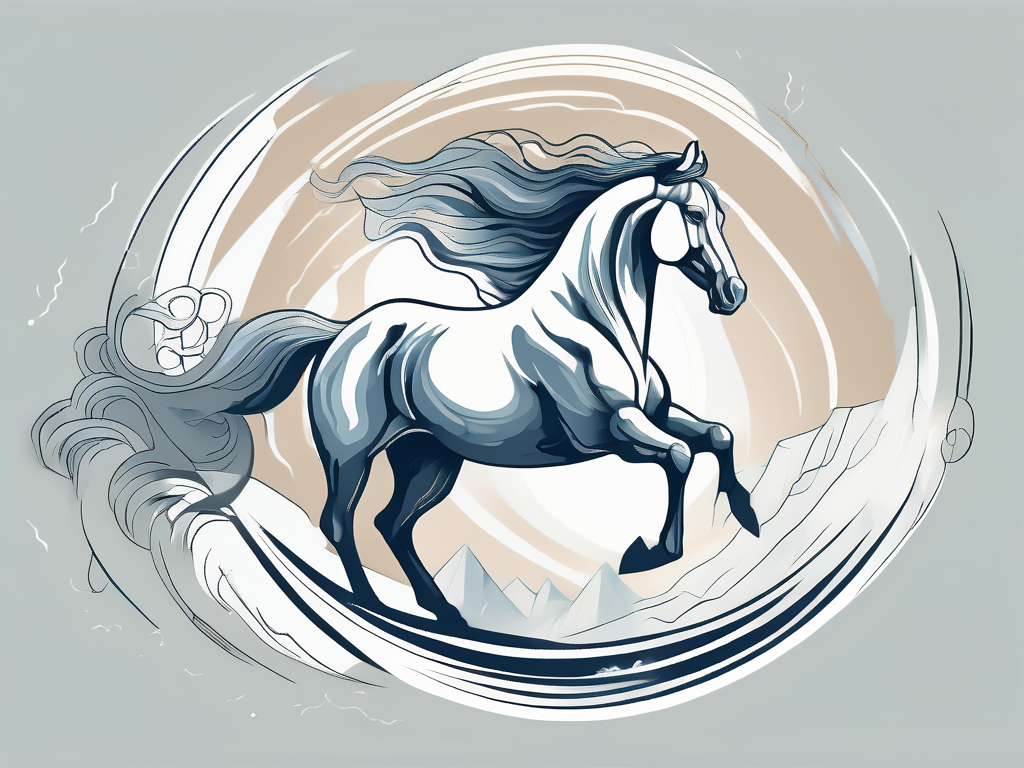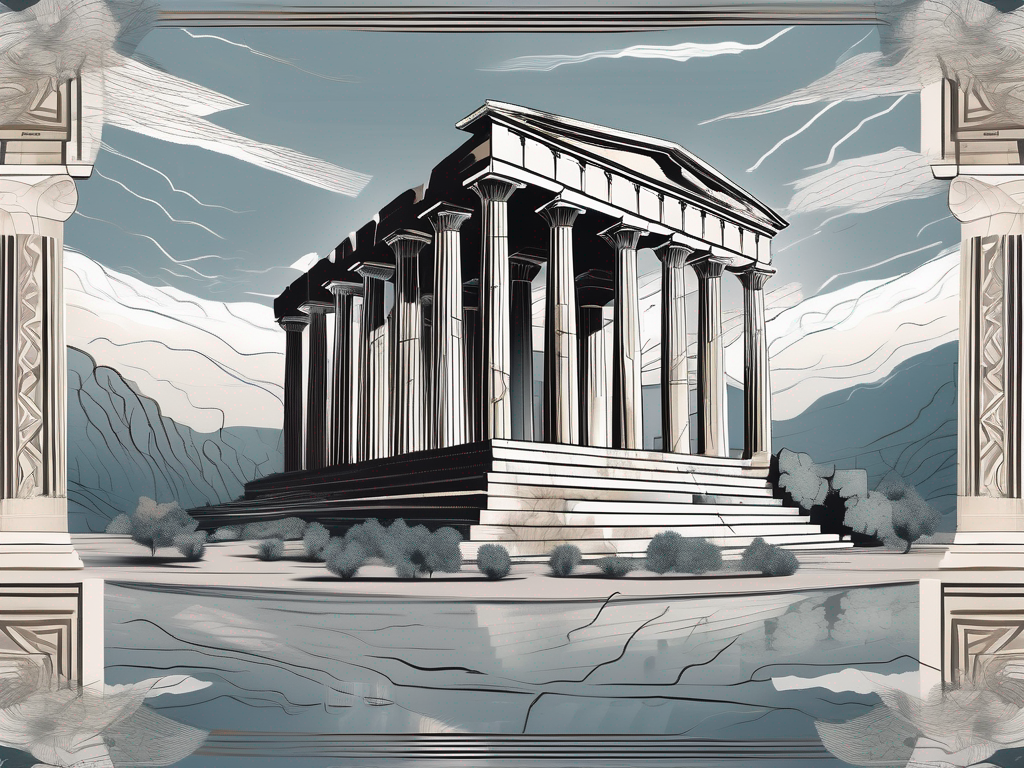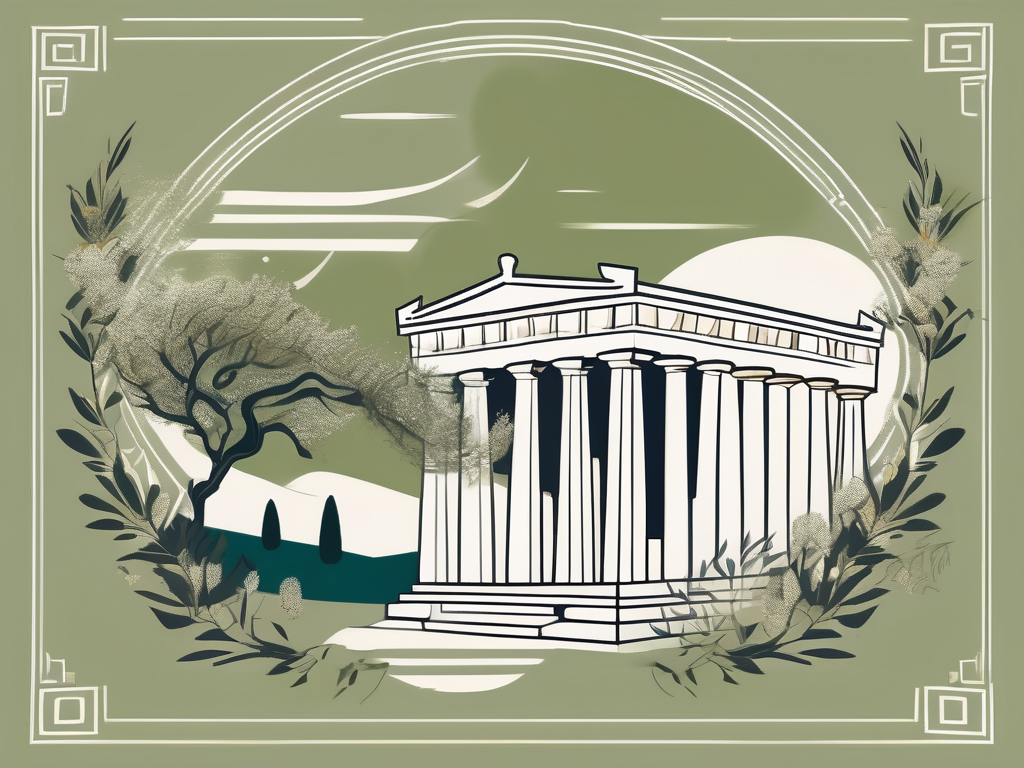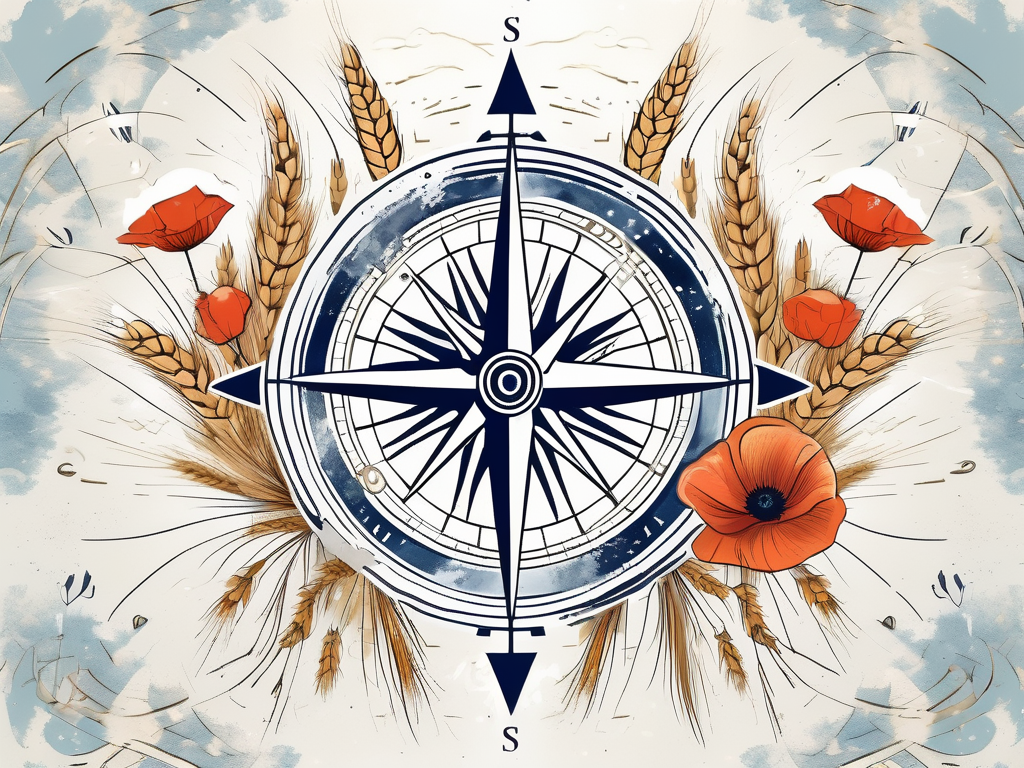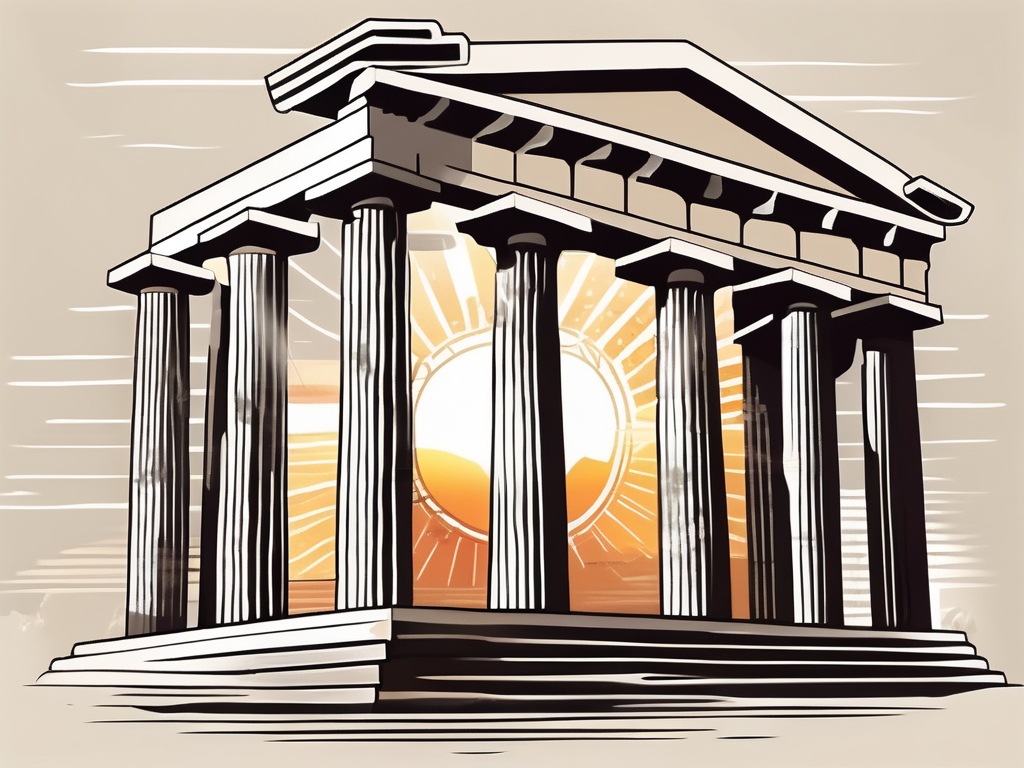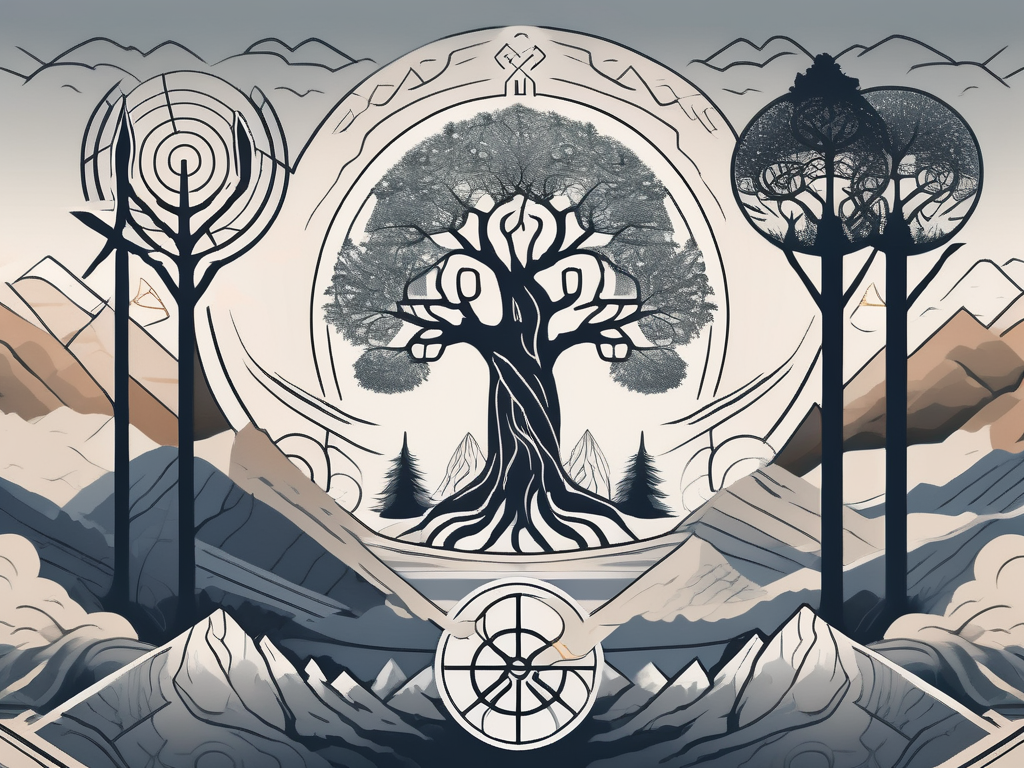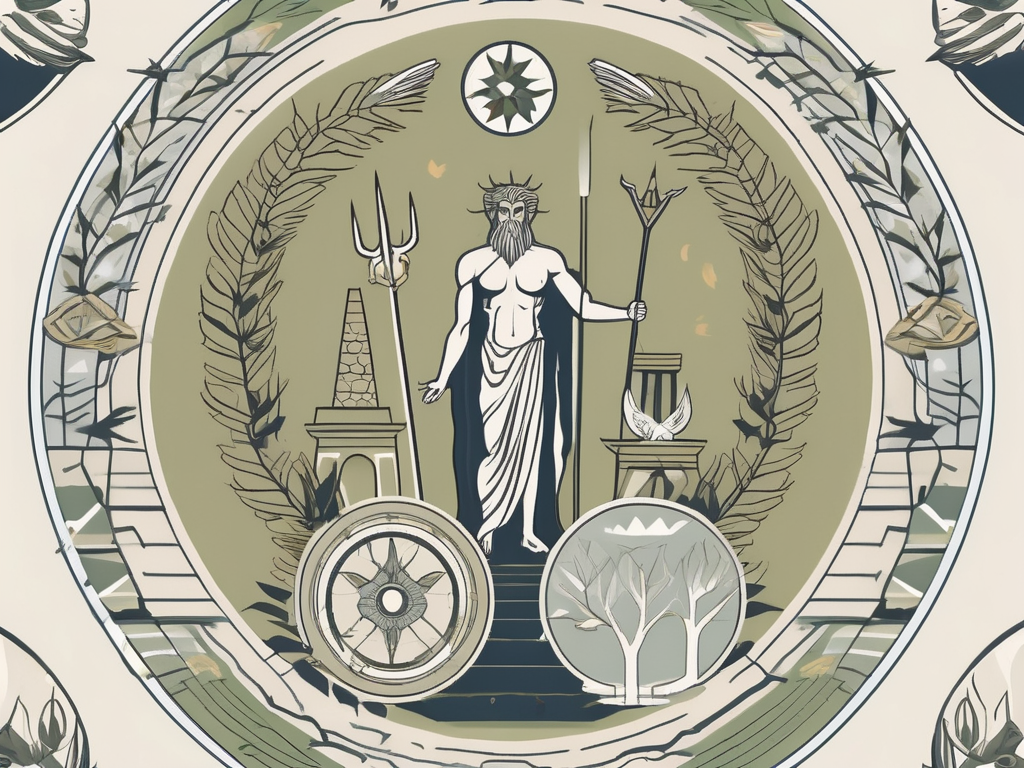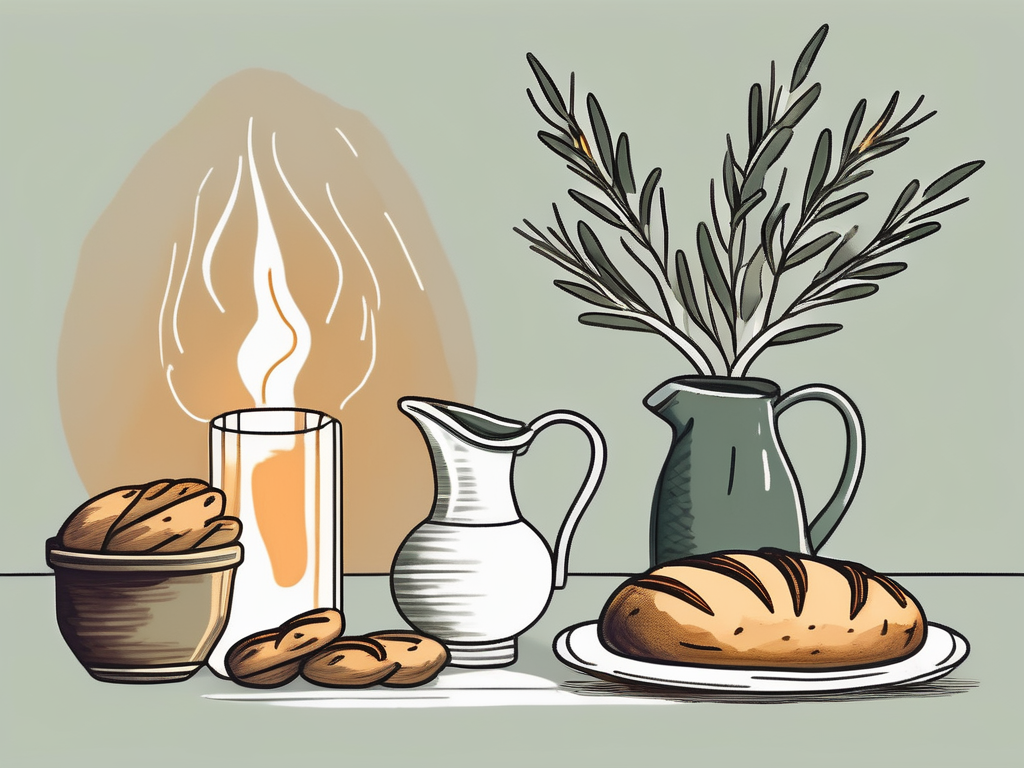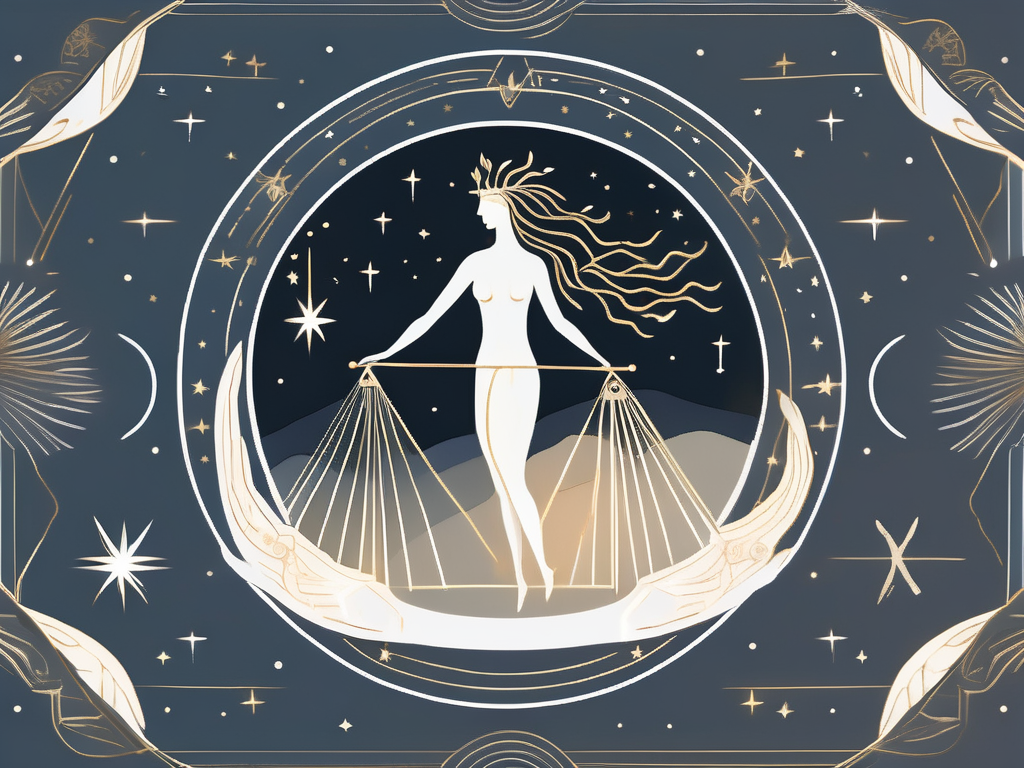Boreas, the Greek God of the North Wind, is a fascinating figure in Greek mythology. Known for his power over the chilling winds that blow from the north, Boreas has captured the imagination of storytellers and artists throughout history. In this article, we will delve into the mythology surrounding Boreas, explore his powers and symbols, examine his family and relationships, uncover the worship and cult dedicated to him, and even take a look at his influence in modern culture.
Understanding the Role of Boreas in Greek Mythology
Before we dive into the details, let’s take a closer look at the role of Boreas in Greek mythology. As the god of the North Wind, his presence is felt in the cold wind that sweeps across the land, bringing winter in its wake. But Boreas is more than just an embodiment of winter; he is a complex deity with a rich history.
In Greek mythology, Boreas is often associated with the harsh and unforgiving nature of the winter season. His icy breath freezes the earth, causing plants to wither and animals to seek shelter. The ancient Greeks believed that Boreas was responsible for the arrival of winter, as his powerful gusts of wind heralded the changing of the seasons.
But Boreas is not solely a symbol of destruction and coldness. In some myths, he is portrayed as a protector of sailors, using his winds to guide ships safely across the treacherous seas. Sailors would offer sacrifices to Boreas, hoping for his favor and protection during their voyages.
The Origins of Boreas
According to ancient Greek myths, Boreas was one of the four Anemoi, or wind gods, born to the Titan Astraeus and the goddess Eos. His siblings included Zephyrus, the god of the West Wind, Notus, the god of the South Wind, and Eurus, the god of the East Wind. Boreas, with his fierce and relentless nature, stood out among his siblings.
Legend has it that Boreas fell in love with Oreithyia, a mortal princess. However, Oreithyia rejected his advances, and Boreas, driven by his passion, kidnapped her and took her to his icy palace in the far north. They eventually married and had several children, including Khione, the goddess of snow.
Boreas’ relationship with Oreithyia is often seen as a metaphor for the unpredictable and tempestuous nature of the North Wind. Just as Boreas forcefully swept Oreithyia off her feet, his winds can be both destructive and captivating, capable of causing chaos or inspiring awe.
Boreas in Greek Literature and Art
Throughout Greek literature and art, Boreas is often portrayed as a powerful figure. In epic poems such as “The Odyssey” and “The Argonautica,” he is depicted as a force to be reckoned with, capable of stirring up storms and wreaking havoc on the seas. Artists have immortalized him in sculptures and pottery, capturing his wild and untamed essence.
One famous depiction of Boreas is found on the Tower of the Winds in Athens. This ancient structure, built by the astronomer Andronicus of Cyrrhus, features a frieze depicting the eight wind deities, including Boreas. The frieze showcases Boreas as a bearded man with windswept hair, holding a conch shell from which the wind blows.
Another notable representation of Boreas can be found in the sculpture known as the “Boreas and Oreithyia” by French artist Jean-Baptiste Carpeaux. This masterpiece captures the intensity and passion of Boreas as he carries Oreithyia away, his powerful wings unfurled and his face filled with determination.
From ancient myths to artistic masterpieces, Boreas continues to captivate our imagination as a god of both awe-inspiring power and chilling coldness. His role in Greek mythology serves as a reminder of the forces of nature that shape our world and the complex nature of the divine.
The Powers and Symbols Associated with Boreas
Now that we have a better understanding of Boreas’ role in mythology, let’s explore his powers and symbols in more detail.
Boreas, the Greek god of the North Wind, possesses a formidable array of powers that are both awe-inspiring and fearsome. His primary power lies in his control over the cold winds that blow from the north, a force that can bring both beauty and destruction. These winds, with their icy touch, have the ability to shape the landscape, transforming it into a winter wonderland or a desolate frozen wasteland. In ancient Greece, Boreas was believed to be responsible for the harsh winter storms that blanketed the land in snow and ice, a testament to his immense power.
Boreas as the God of the North Wind
As the god of the North Wind, Boreas wields his power with great authority. He commands the chilling gusts that sweep across the land, causing trees to sway and shiver, and sending a shiver down the spines of mortals. These winds can be gentle whispers, caressing the cheeks of those who venture outside, or they can be fierce tempests, capable of uprooting trees and tearing through buildings. Boreas’ control over the winds extends beyond their intensity; he can also direct their course, guiding them to where they are needed or unleashing them with unrelenting force.
It is said that Boreas’ breath carries the essence of winter itself, a frosty breath that can freeze the very air around him. When he exhales, his breath crystallizes into delicate snowflakes, each one unique in its intricate design. These snowflakes dance in the wind, creating a mesmerizing spectacle that captivates all who witness it. However, Boreas’ breath can also unleash blizzards, engulfing the land in a swirling vortex of snow and ice, rendering it inhospitable and treacherous.
The Iconography of Boreas
In art, Boreas is often depicted as a mature man with a beard, symbolizing his wisdom and experience. His strong physique and commanding presence reflect his power and authority over the winds. He is often portrayed wearing a billowing cloak, which serves as a visual representation of the winds he controls. The cloak, caught in the gusts, appears to be in perpetual motion, emphasizing the dynamic nature of Boreas’ power.
Furthermore, Boreas is sometimes depicted with wings on his back, a symbol of his ability to traverse the skies swiftly. These wings, like those of a majestic bird, enable him to soar through the air with grace and agility. They represent his dominion over the heavens, as he navigates the celestial realm, surveying the world below with his piercing gaze. The inclusion of wings in his iconography also suggests his connection to other winged deities, such as the gods of flight and birds, further emphasizing his divine nature.
In conclusion, Boreas’ powers and symbols are a testament to his status as a formidable deity. His control over the cold winds of the north and his iconic representation in art showcase his immense power and authority. Whether bringing forth a gentle breeze or unleashing a fierce blizzard, Boreas leaves an indelible mark on the world, reminding mortals of the awe-inspiring forces of nature.
Boreas’ Family and Relationships
Like many gods, Boreas had an intricate web of family and relationships. Let’s take a closer look at the connections that shaped his mythology.
Boreas and His Siblings
As mentioned earlier, Boreas had three siblings who were also wind gods. Zephyrus, the god of the West Wind, was his brother and often depicted as a gentle and warm breeze. Notus, the god of the South Wind, was his other brother and associated with summer winds. Finally, Eurus, the god of the East Wind, completed the quartet of wind gods.
Boreas’ Love Interests and Offspring
Boreas had a notable love story with Oreithyia, a mortal princess. Their union resulted in several children, including Calaïs and Zetes, the winged Argonauts who played a crucial role in Jason’s quest for the Golden Fleece.
The Worship and Cult of Boreas
Now let’s turn our attention to the veneration of Boreas in ancient Greece.
Ancient Sites and Temples Dedicated to Boreas
While there is not much extant evidence of specific temples dedicated solely to Boreas, his presence was acknowledged in various ways. For example, at the Temple of Hephaestus in Athens, there was a frieze depicting Boreas abducting Oreithyia, symbolizing their union.
Festivals and Rituals in Honor of Boreas
Another way the Greeks honored Boreas was through festivals and rituals. These events celebrated the changing seasons and the power of the north wind. One such festival was the Winter Solstice, where offerings were made to Boreas to ensure the return of spring.
Boreas in Modern Culture
Although ancient, Boreas continues to captivate the imagination even in our modern world.
Boreas in Contemporary Literature and Film
Authors and filmmakers have drawn inspiration from Greek mythology, and Boreas is no exception. His character appears in various works of literature and film, often as a representation of cold and harsh environments or as a powerful force to be overcome.
The Influence of Boreas on Modern Art and Design
Boreas’ influence extends beyond the realm of literature and film. Artists and designers incorporate elements inspired by the god of the North Wind into their creations. From fashion to home decor, the essence of Boreas can still be felt today.
As we conclude our exploration of Boreas, it is clear that this Greek god holds a special place in mythology and continues to leave his mark on various aspects of our culture. Through his mythology, powers, and symbols, Boreas reminds us of both the beauty and the power of nature, inviting us to appreciate the forces that shape our world.
